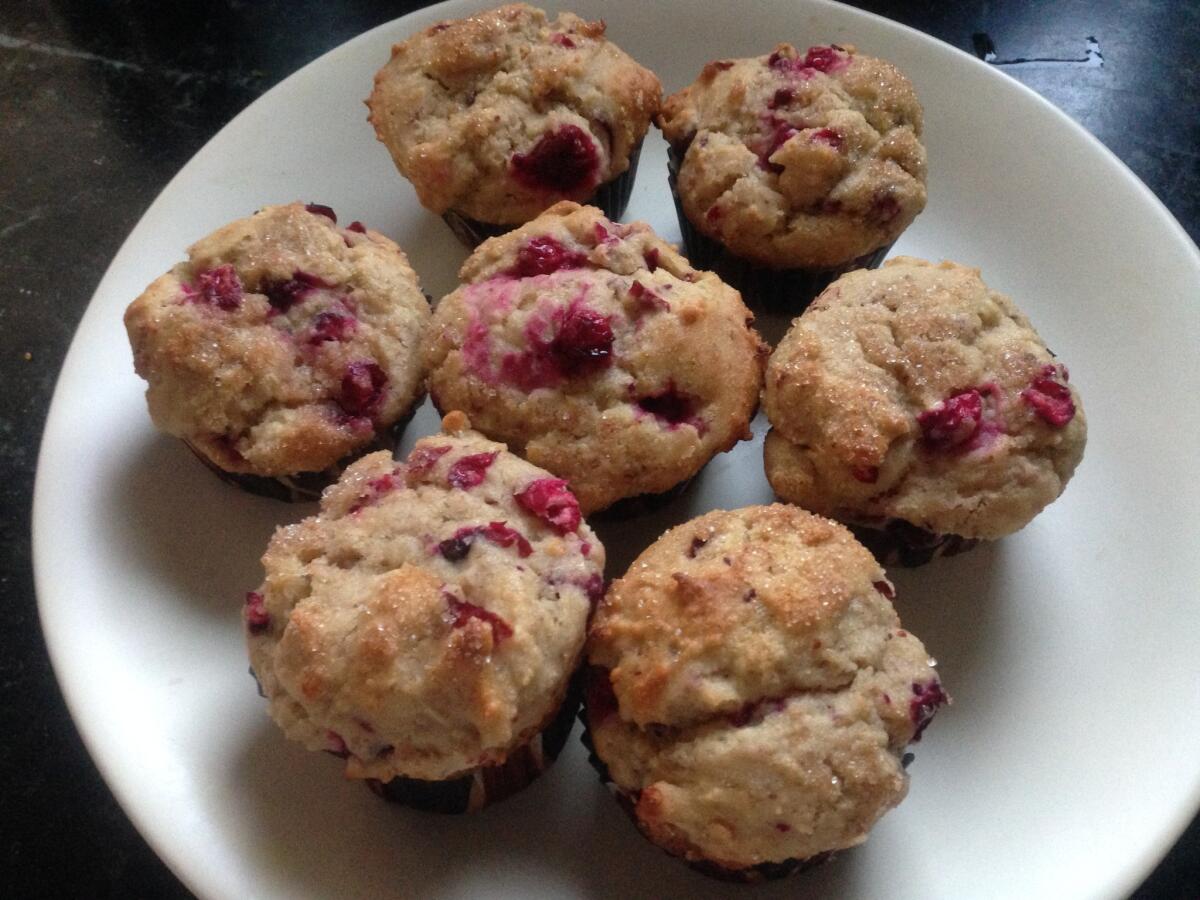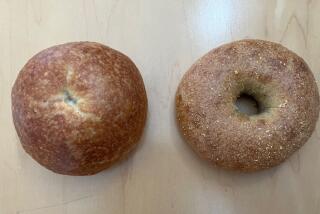‘America’s Test Kitchen’ does gluten-free with new cookbook

“America’s Test Kitchen” has trained its persnickety palate on gluten-free food.
“We were really surprised how hard this was,” says Jack Bishop, “America’s Test Kitchen” editorial director. “We thought we would just figure out which flour to plug into existing recipes.”
Not even close, as it turned out.
Eight people spent almost a year in the kitchen working on “The How Can It Be Gluten Free Cookbook.”
Perfecting biscuits, chocolate chip cookies, muffins, sandwich bread and pizza “was an insane amount of work,” Bishop says.
But that’s one kitchen -- at 2,500 square feet -- that can manage it, Bishop says. “It was really what our test kitchen should be doing: 1,800 blueberry muffins, 50, 75, 100 times for some of these recipes.”
Using “America’s Test Kitchen” hallmark methods, the cooks worked through dozens of versions of recipes to sort out just the right ingredients to make pasta without gluten as delicious as pasta with gluten -- a protein that “provides lift during baking. It also produces good chew,” writes Christopher Kimball, the host of “America’s Test Kitchen” and the founder and editor of Cook’s Illustrated magazine.
Kimball writes: “The vast majority of gluten-free recipes either do not work or the results are so second-rate that you would be hard-pressed to eat them.”
The editors often had to change direction from what they learned working with wheat flour. For example, when making batter for pancakes or muffins, the idea is to gently fold in dry ingredients to develop the gluten as little as possible. But for gluten-free batters, the challenge was to thoroughly hydrate the flours.
“So we ended up incorporating the flour quite vigorously,” Bishop says. “You have these habits ingrained for 10, 20 years and you need to step back.”
The cranberry-orange-pecan muffins call for combining ingredients in the food processor and then letting the batter rest for half an hour. The results are terrific -- muffins that would please anyone, gluten-free or not. More so than most, though, they’re best eaten fresh.
There are many commercial brands of gluten-free flour meant to be substitutes for wheat flour. The editors tested those, and rated them as is done in their sister publication Cook’s Illustrated magazine. (They did the same for some other products, including gluten-free sandwich breads, recommending Udi’s white bread.)
But none of the commercial flours was just right, the editors decided. So they created their own with rice, tapioca and potato flour and milk powder. While it is used in most of the book’s baking recipes, the editors kindly provide alternatives and explain how those flours might behave in the food.
Another recipe for which the cooks had to take a new look at old habits was pizza dough. And it was almond flour that solved the problem of providing a richer dough. Because the gluten-free yeast doughs had less protein than wheat doughs, they needed a boost, which baking powder or soda provided. Potato flakes worked better than other ingredients in meatloaf.
Of course, many recipes never had gluten to begin with, and there are some of those in the book. One revelation from those dishes, Bishop says, was the range of grains. Millet porridge with maple syrup, quinoa patties, kasha pilaf with caramelized onions and oat berry pilaf with walnuts and Gorgonzola are just a few of them.
“The book began to open my eyes,” Bishop says. “A lot of cooks fall into ‘We’ll just treat it like rice.’ The more we did it, we realized you don’t want to just treat them like rice.”
While two members of the test kitchen staff have long avoided gluten, the idea for the book grew from the steady stream of requests from readers and viewers. But the recipes had to work, and they had to be delicious for everyone. Bishop says the gluten-free versions are not always the same as the originals, but they’re just as good. In fact, he prefers the gluten-free chocolate chip cookies.
For those who want a demonstration, gluten-free pizza and chocolate chip cookies are scheduled to be featured on the TV program in January 2015. And a second gluten-free book is in the works, Bishop says.
ALSO:
More to Read
Eat your way across L.A.
Get our weekly Tasting Notes newsletter for reviews, news and more.
You may occasionally receive promotional content from the Los Angeles Times.







